Family History
Family Lore: Fact or Fiction
November 8, 2012 by ramona
Filed under Articles, Family History, Latest News
 After 20 plus years doing genealogy I can safely say that I have yet to come across a family that does not have an amazing family legend – or two – to share.
After 20 plus years doing genealogy I can safely say that I have yet to come across a family that does not have an amazing family legend – or two – to share.
Tales of ancestors, who were involved in well-known historical events, descent from famous individuals or claims to medieval castles count among the usual family tales.
These stories, often long established and deeply rooted, become a part of oral tradition as they are passed from generation to generation.
My first experience with family lore (many, many years ago) came with a visit from a McCallum relative who had recently returned from a trip to Scotland. Along with the wonderful gifts and souvenirs, she brought back a story of how she had visited Duntrune: the haunted family castle in Argyll.
My imagination ignited, I sat transfixed as she related the fantastic tale of our ancient family seat, that now, through the luck of birth order in a long distant past, belonged to a distant cousin…or so the story goes.
The Family Tree Connection
The cousin in question is 19th Laird of the clan, Robin Neill Malcolm. Who related a tale about the castle being haunted? Although he himself had never seen a ghost or experienced anything unusual, he did say that his parents had.
In Fact his step-mother refused to stay there alone as it was common for objects to move about in the night.
The Story
In the 1600s Duntrune Castle was the home of the Campbells in Argyll. During the wars of that time, the Campbell chief was called away. In his absence, the McDonalds attacked and overtook the castle killing all who had been left behind, with the exception of the piper.
Knowing that the Campbells would return, the McDonalds laid in wait, hoping to set a deadly trap for the clan chief. However, they did not count on the cunningness of the piper who upon seeing his lords ship returning began to pipe a lively tune, which quickly turned to a dire warning.
The McDonalds realizing what had happened were angered and in retaliation, they cut off the pipers hands: an act, which ended his life. To this day, there have been stories of ghostly piping and other unexplainable events.
The story of Duntrune Castle from the Discovery Kids network:
In my youth, I loved to relate this story of our haunted castle. However as I grew older and became involved in genealogy I began to question the truth of the tale…and not just the ghost story.
It was the story of Duntrune which led me to develop a strong interest in finding truths behind family tales and legends.
Join me Thursday, 15 November 2012, and using the Duntrune case study, you will learn the research skills and techniques needed to help verify whether your family story is fact or fiction.
Tall Tales & Old Blood – LIVE chat with Ramona Hartley
Thursday, 15 November 2012
20:00 until 21:00 in EST
Hosted by Genealogy Beginner
Image courtesy of emalcolmjr via Photobucket
Genealogy, History, Tall Tales & Ghost Stories
October 11, 2012 by ramona
Filed under Articles, Family History, Latest News
 Every family historian knows that woven through the branches of their family tree are family stories and legends distorted by time.
Every family historian knows that woven through the branches of their family tree are family stories and legends distorted by time.
Sometimes however, genealogy plays a role in the legends of entire communities. This could not be truer than in the story of Fernie, a small coal-mining town nestled in a peaceful valley in the East Kootenay region of British Columbia, Canada.
The Tall Tale
While out seeking his fortune in 1887, a young prospector named William Fernie was camped beside a hunting party from the Kootenai tribe. He noticed a necklace of gleaming black stones hung about the neck of one of the chief’s daughters. William Fernie knew at once that the stones were coal and asked the chief where they could be obtained. The chief would not tell him, so he pursued the girl, promising marriage in order to learn the secret. Fernie however, after learning the location of the coal broke his promise…deserting the girl.
Angered, her mother set a curse upon the valley and all who would dwell there to die from fire, flood and strife.
To this day, high upon the rock face of Hosmer Mountain looms the ghostly shadow of the abandoned Indian Princess, seated upon a horse: an eerie mark of the curse, which has since plagued the valley with death, disaster and destruction
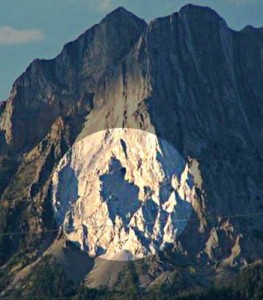 As fantastic, as this story seems there are small grains of truth. Following a trail of historical breadcrumbs and genealogical hints it was possible to find just enough fact in the fiction to understand how, combined with the enigmatic shadow, the disasters and a little imagination…this story might have come about.
As fantastic, as this story seems there are small grains of truth. Following a trail of historical breadcrumbs and genealogical hints it was possible to find just enough fact in the fiction to understand how, combined with the enigmatic shadow, the disasters and a little imagination…this story might have come about.
The Seeds of Truth
The Curse
In 1904, a large part of the city was destroyed by fire. In 1908 fire again claimed the city and with it the lives of several innocent citizens. Flood struck the city in 1916 and famine during the great depression. Relief came in 1964 when the Kootenai People and Chief Red Eagle lifted the curse in a ceremonial smoking of the peace pipe.
The History
The city of Fernie is named for its founder William Fernie, the nineteenth century prospector responsible for establishing the coal industry. However, Fernie’s contemporary Michael Phillips discovered the coal.
Phillips, a pioneer famous for forging a route through the Rocky Mountains (The Crows Nest Pass) was prospecting for gold when he came across the coal seams…about which he told Fernie.
The Genealogy
In 1886, Michael Phillips married Rowena David: daughter of Chief David and thus an Indian princess[1].
Legends and family lore are often deeply buried in historical fact. As time passes, these stories grow like a game of telephone: morphing into tall tales that are sometimes woven into the fabric of communities.
The moral of this story…
When digging through the roots of your family tree take some time to learn about the history of your ancestor’s communities. You may be pleasantly surprised by what you learn.
[1] http://www.archivescanada.ca/english/search/ItemDisplay.asp?sessionKey=1143825756048_206_191_57_199&l=-1&lvl=1&v=0&coll=1&itm=145090&rt=1&bill=1
[1] http://www.folklore.bc.ca/Locallegends.htm
Genealogy and Disasters
September 24, 2012 by ramona
Filed under Articles, Family History, Latest News
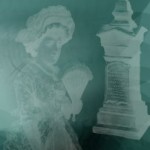 It may very well be the desire to know who we are and where we come from that leads us into family tree research…but it is often the family history stories that keep us going.
It may very well be the desire to know who we are and where we come from that leads us into family tree research…but it is often the family history stories that keep us going.
The clues we find in the written record such as an accidental or unusual cause of death can take us on a journey into the past: a journey that sometimes concludes in the discovery of an ancestor’s tragic end.
Such was the case with Clara Rawson whose 1908 death certificate stated the cause of death as “burnt in fire in Fernie”. A little digging through newspaper archives revealed that in August of 1908 there occurred a forest fire of epic proportions. The 1908 fire that killed Clara blazed hundreds of miles down a valley wiping out several communities and resulted in over 600 deaths.
Gendisasters.com
If you find hints that your ancestors perished from a disaster such as a fire, flue epidemic, earthquake, mine explosion, tornado, train wreck or landslide…not to mention a more famous one such as the sinking of the Titanic: Gendisasters.com is a site you will want to visit ASAP.
Gendisasters is a genealogy site dedicated to recording and publishing information involving histories disasters both natural and man made. The site allows family history hunters to search through their database by:
- Year (1755-2011)
- Location (within Canada and the US)
- Disaster
Finding Ancestors
The depth of the genealogical information included on the site ranges from sparse to quite rich in detail. For example, information on the 1903 landslide in Frank, Alberta, Canada gave the names of 55 victims along with occupation and in some cases family information. Such is the case with WILLIAM WARRINGTON, a miner whose wife and six children also perished in the disaster.
The site also contains newspaper stories of accidental deaths that are a little out of the ordinary such as:
- The tragic death of two young boys in Rosier Mo, who were attacked and eaten by wolves in 1898
- The Powell, WY man who was attacked and killed by a buck sheep (Ram) in 1929
- The boy from Arlington, MN who perished when a tombstone fell on him during a grave decorating party
- The 1920 death of two men who were killed by an elevator that fell 10 stories
If you find an unusual cause of death for one of your ancestors, Gendisaster may be the ideal site for you to flesh out the details of the event. Best of all…this genealogy site is free!
A Family History of Chivalry
August 20, 2012 by ramona
Filed under Articles, Family History, Latest News
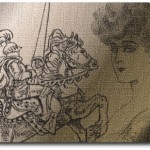 One of the most enjoyable things about researching your family history is learning about some lesser-known historical facts. This can be even more exciting when you discover that your ancestors had a part to play.
One of the most enjoyable things about researching your family history is learning about some lesser-known historical facts. This can be even more exciting when you discover that your ancestors had a part to play.
For example, it can be a thrilling moment when you discover that there was a knight in your family tree.
It can be a bit of a surprise if you find out that the knight was a woman.
During the middle ages, there were several orders of knighthood for women such as:
The Order of the Hatchet
Founded by the Count of Barcellona in 1149, The Order of the Hatchet honored the women who fought against the Moors in defense of the town of Tortosa. The Order granted the lady knights precedence over men at public assembly as well as an exemption from taxes.
The Order of the Glorious Saint Mary
Loderigo d’Andalo, an Italian nobleman from the town of Bologna founded The Order of the Glorious Saint Mary in 1233. Later approved by Pope Alexander IV in 1261, this was the first of the religious orders of knighthood granted to women.
The Order of the Garter
The Order of the Garter was granted to 68 women between the years 1358 and 1488. Many of the women appointed to this order were wives of knights of the order or those of noble blood: although, there were members who were neither. A symbol of the Knights of the Garter is a garter worn upon the left arm; many such are seen on the headstones of those inducted into the order.
The term for a woman who has been knighted is “Dame”.
If you find this title associated with one of your ancestors it will be because she belonged to an order of chivalry. Often these titles are only held for life and are not hereditary.
To learn more about medieval genealogy visit The Foundation for Medieval Genealogy but first remember to download your Family Tree Chart available with your 30-day free trial to Genealogy Beginner
Gaming for Ancestors
August 7, 2012 by ramona
Filed under Articles, Family History, General Tips, Latest News, Preserving Your Family Tree
 If you are looking for a fun and unusual way to record your family tree you might want to consider playing Family Village.
If you are looking for a fun and unusual way to record your family tree you might want to consider playing Family Village.
Family Village is a facebook game that allows family history hunters to build a family tree in game format. The premise of the game is to invite relatives to play and create a database of ancestors along with living family members by entering their information into the game.
How Does this Create a Database of Ancestors?
The game allows you to go on quests and build a village by entering all the usual types of genealogical information about your ancestors such as birth, marriage and death documents and photos. It allows you to enter immigration information, maps and newspaper articles as well as adding occupations. You can even build avatars of your ancestors.
In their vision statement game developer Finium says that their purpose in developing the game is to provide meaningful games that will aid family tree hunters in preserving their family history.
Family Village is a great way to connect with relatives and get the whole family involved in genealogy.
Pinning your Family Tree
July 14, 2012 by ramona
Filed under Articles, Family History, Latest News, Preserving Your Family Tree
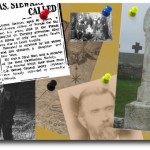 Well it certainly did not take long for family tree fanatics to make use of social media “pinning” sites.
Well it certainly did not take long for family tree fanatics to make use of social media “pinning” sites.
If you are new to social media here is what you need to know about pinning. Pinning is a visual way of sharing your interests via a virtual pin board. You can create boards based on a singular theme such as genealogy, family tree, family history etc. Ultimately, what these sites do is share links through images. One way to think of it is as a visual bookmark.
Pinning for Genealogy
Pintrest
Pintrest can be used as a fantastic tool for organizing your genealogy, sharing resources and following others with like interests. The only catch is that in order to use Pintrest you must first receive an invitation.
Pinspire
If you do not have an invitation to Pintrest, you can try out its identical twin Pinspire. Pinspire is identical to pintrest with one exception…no invitation required.
If you want to check out more pinning sites, Minglewing, Piccsy and Storify are good places to start.
Uencounter.me
The newest kid on the pinning block is Uencounter.me a pinning site with a purpose. Uencounter.me is a mapping site that focuses on letting the user built a visual map of their family tree.
Building a visual map of your ancestors can be a very helpful tool for your family history research. However, the possibilities for information sharing with this type of application are easy to see.
Imagine the map as a resource for finding ancestors by location. Although other search sites come close, if you are not familiar with the geography of the area you are searching… it is easy to become confused and miss something.
For example:
My line of McCallum’s hail from Lanarkshire Scotland can be found in the census at Firth, Carstairs and Carnwath. While that may not mean much on a data screen, having a visual of just how close those communities are, helps give some perspective to your search.
Using Uencounter.me
The process starts by bringing up the map and asking you to zoom into your area of interest. You can also pin a place by adding the address.
Drop down menus let you select:
- Type of Encounter: Genealogy,
- Dates to and from: a date range from the present to the year zero,
- People Here Are / were: ancestors
- This pin relates to: an ancestor
- Specifically: Birth, Marriage, Death, other
For those of you who want to pin live relatives do not worry as the site gives the option for a privacy setting on an individual basis. As you move forward to the next step you will get a pop up box that allows for notes, you can even add photos.
While Uencounter.me shows all the earmarks of a superior genealogy tool, a searchable name function would make this an invaluable free resource for genealogists everywhere.
Need to learn more about finding your ancestors through the geography of genealogy check out Genealogy Beginners lesson on Searching by Place. Available with your 30-day free trial membership.
Donating Genealogical Records
June 28, 2012 by ramona
Filed under Articles, Latest News, Preserving Your Family Tree
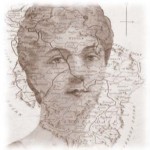 Have no doubt that your family tree research has value beyond the current generations of your own family.
Have no doubt that your family tree research has value beyond the current generations of your own family.
Donating your family history to a local historical or genealogy group is an excellent way to make certain all of your hard work is put to good use. Local Historical Societies and Genealogy groups have a stake in preserving your records for future generations.
How to Donate Your Family Tree
If you are considering donating your family tree research the best place to start is by contacting your local library. Your local library can help you identify the archives that are best geographically suited to receive your family’s story.
Generally, community groups are interested in local reference records. However, they may have ties to other groups with broader interests such as provincial or state archives.
When donating a rather widespread family tree it may be worth considering breaking it into smaller portions focusing on specific locations.
While it is normal in a large family tree to have a significant geographical spread with ancestors coming from all corners of the globe, a local group may have limited space. Therefore, it is reasonable that they may not want to house large documents unless they are completely location specific.
What to Include with Your Donation
Along with your family tree templates or pedigree charts, you should include either originals or copies of:
- Primary and secondary source documents
- Old photos
- Vital Records
- Newspaper clippings
- Maps
Donating your family tree data is one of the best ways of sharing your genealogy and contributing to the preservation of history in your community. Not only does it help preserve your research for future generations it may be key to helping another family history researcher to break down a brick wall.
However, before you donate be sure not to part with any original items you or other members of your family may want to keep. Lastly, make certain that all of your research conforms to The Big Five Genealogy Standards and Guidelines.
To learn more about genealogical standards sign up today for Genealogy Beginner’s 30-day free trial and receive Eight, Step-by-Step Weekly Lessons You Can Do At Your Own Pace. Starting with Lesson 1: Genealogy Standards And Guidelines.
Genealogy: Getting to Know Your Ancestors
June 14, 2012 by ramona
Filed under Archives, Family History, Genealogy groups, societies and organizations, Latest News
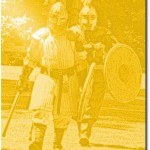 The Merriam Webster Dictionary gives a definition of genealogy as:
The Merriam Webster Dictionary gives a definition of genealogy as:
- an account of the descent of a person, family, or group from an ancestor or from older forms
- the study of family pedigrees
Strictly speaking, this is true; it is certainly a good definition of the process and an accurate descriptor of the intent with which genealogy is first approached. However, to those of us who have spent any length of time on this addictive hobby, the study of our ancestors begins to take on new meaning.
It is not long after family tree research begins that the dry definitions become inadequate. As we work our way through record after record, learning piecemeal the details of our ancestors lives we begin to feel we are getting to know them as individuals.
For some, the genealogical aspects of family history research are not enough. We want to get to know our forefathers on a deeper level. Become more familiar with their day-to-day lives.
If you count yourself among those wishing for a deeper understanding of your generations past, there are a number of activities you can participate in; activities that will allow you to experience your family history in a very real way.
Recreationists
Pick almost any period in history and you will find a group of people actively recreating the era. Living history groups include the activities, dress and tools of the eras they portray to give participants the sense of stepping back through time. Recreationists are not re-enactors; they are not scripted nor are they involved in recreating specific events. Member’s interests can include clothing styles, pastimes, cookery and artisanship, everything that would help create a feeling of every day life in bygone days. It is not at all surprising that among their ranks you find many genealogists and family historians.
Living History Groups
From late 20th century groups like “The 20th Century Revisited” A UK based group recreating scenes and events from various parts of the later 20th Century including WW2 resistance, and 1970 British Army of the Rhine (BAOR) or “Paper Dolls” An international group made up of female members who portray military and civilian life during World War Two. From hometown sweethearts, Women’s Land Army, French Resistance, American Red Cross, Women’s Army Corps. These groups offer an opportunity to learn what it was like for ancestors who lived during the great wars; both on and off the battlefield.
If you are more interested in the events of the 19th century The Living History Society of Minnesota members can attend workshops and participate in activities designed to increase their knowledge of mid 19th century life. For those whose Gr,Gr,Gr, Grandfathers heeded the familiar call of “Go West young Man” the Mojave Muleskinners have several branches across the US, Canada and the UK where you can immerse yourself and learn about life in the old west.
If you can trace your family tree to medieval times, a living history group from the Middle Ages may be more suiting. The Society for Creative Anachronism (SCA) is an international organization with over 30,000 members residing in countries around the world. One of the best things about this group is that you will find a mix of cultures from Viking to Italian to Middle Eastern. Members attend events such as tournaments, royal courts, feasts, dancing, various classes, workshops and more. The SCA is a group that lets you explore all of the European lines in your family tree.
If you want to know more about how living history groups can help enrich your genealogy and family history or how to find a group near you, just post a question to the Genealogy in General board on the Genealogy Beginner forums.
Preserving Family History: The Creative Family Tree
June 1, 2012 by ramona
Filed under Articles, Family History, Latest News, Preserving Your Family Tree
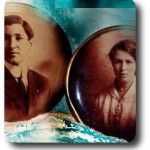 Genealogists and Family Historians are coming up with some wonderfully creative ways to document and share family trees. From video documentary to fine art pieces, the ways we are honoring our ancestors is becoming more and more creative.
Genealogists and Family Historians are coming up with some wonderfully creative ways to document and share family trees. From video documentary to fine art pieces, the ways we are honoring our ancestors is becoming more and more creative.
Video Documentary Family Tree
Documenting your family tree can become a visual auditory experience with the help of a company called Reel Tributes.
The inspiration for the company came with the passing of founder David Adelman’s Grandmother Eunice. Wanting to express her story, Adelman and his mother put together a video that documented their family history. The film tracked their family through photographs and stories beginning in 19th century Russia to their current life in San Francisco.
Emotionally powerful, the film created such a strong response that it motivated Adelman to start the company. Reel Tributes provides a way for families to memorialize their histories in a distinctive format.
As part of their service, Reel Tributes uses:
- Interviews
- Home videos
- Photographs
- Archival footage
Set to music and narrated throughout, the TV quality documentary films produce an overall effect that is eloquent and compelling.
Facebook Family History Book
As of 2011, Facebook had over 5 million users that is one in every 13 people. It is no small surprise that more and more family historians are using the social network to pay homage to their ancestors.
The new timeline has a beautiful display that allows families to come together and share information in real time; no matter how distance may separate them. Taken as a whole, a facebook page works as an interactive family history book. The unique format makes it possible to document your family’s story with photos, family legends, historical records, recipes and more. It may even lead you to finding new cousins who can help you grow and enrich your family tree.
Ancestral Art
Writer Thomas Merton said, “Art enables us to find ourselves and lose ourselves at the same time”. Most genealogists would probably agree that those words ring equally true in describing the experience of tracing our roots.
One of the most touching tributes to family history I have seen came in the form of a collage. Using scraps of material from old garments, copies of photographs, records and old letters the artist created a pictorial representation of their family’s journey from Czechoslovakia to Canada.
Creating a collage is a wonderful way of presenting a visual story of your family history.
Better yet, it is so easy you do not need to be a professional artist to make one. All it takes is some good quality copies of photos and documents as well as a few art supplies and you will have not only a visual reference but also a gorgeous new piece of art for your wall. A collage also makes a wonderful gift and it is simple to have prints made from your original.

Of course, all of this starts with those first steps of learning genealogy.
Genealogy Beginner can get you started with a free one-month subscription that includes Eight, Step-by-Step Weekly Lessons, Personal Support from Our In-House Genealogists and a starter kit complete with family tree charts, research tracking forms and more.
Family Heirlooms: Preserving the Past
May 20, 2012 by ramona
Filed under Articles, Family History, Latest News, Preserving Your Family Tree
 Those interested in climbing their family tree often have a passion for the stories and keepsakes passed from generation to generation.
Those interested in climbing their family tree often have a passion for the stories and keepsakes passed from generation to generation.
It is not surprising that they frequently find themselves the guardians of traditions, stories and irreplaceable family heirlooms. Family heirlooms come in many forms, from jewelry to old diaries to 100-year-old garments like christening gowns.
Being the keeper of the family treasures is a big responsibility and rarely taken lightly. While some heirlooms are easily cared for, others such as very delicate old textiles like quilts, needlework pieces, dolls and garments require very careful handling.
Old Textile Do’s and Don’ts
Caretakers with the best of intentions sometimes damage old textiles through lack of knowledge. The following list will help family historians in following the first rule of caring for your family’s textile keepsakes…do no harm.
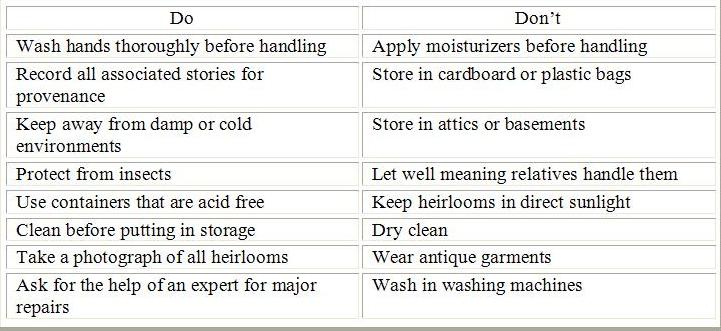
Cleaning Old Textiles
Old textiles are often weakened through time. When cleaning never wring, scrunch or hang them as they may tear easily. Always lay them out flat to dry and wrap them in acid free tissue paper or a clean white cotton sheet before storing. It is very important that heirloom textiles are always stored flat and never crushed.
Wool
Before you clean any antique woolen garment, it is a good idea to test it for color fastness. To do this simply apply a little water then squeeze it in between some paper towel. If the color bleeds, you will need to give it a vinegar treatment to stabilize the dye. To do this, soak the garment in a mixture containing one gallon of water to one tablespoon of white vinegar for five to ten minutes. To dry the garment place it between a couple of thick absorbent bath towels, press out excess moisture and lay flat to dry.
Cotton
Cottons have a tendency to yellow with age and shrink if not dried properly. Before attempting to wash any cotton garment or textile, try cleaning with a soft brush and a low suction vacuum. When cleaning cotton garments it is best to treat stained areas with hydrogen peroxide rather than to attempt cleaning the entire garment. Before attempting, any major restorations consult a professional.
If you’re the guardian of your families textile treasures Genealogy Beginner recommends reading “The Textile Conservator’s Manual”, by Sheila Landi available from Amazon.com.
